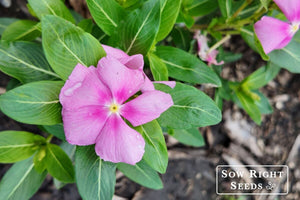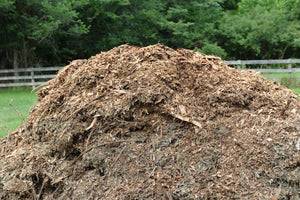Never Run Out of Fresh Produce! Succession Planting Tips & Tricks
TechniquesOnce you start gardening, you will want to make the most of every growing space you have. Succession planting can help gardeners maximize their space while managing time and maintaining a steady, ongoing harvest. This key gardening technique requires some planning, but it has many benefits for the home gardener.

What is Succession Planting?
Succession planting is seeding crops at intervals in order to keep a steady harvest and to make the most of your growing space throughout the growing season. When the old crops are removed, new crops are grown in the space left behind by the old crop.

Succession Planting Step-by-Step
Succession planting can take some time to figure out as it can look different for every garden. But with this powerful gardening technique, you can ensure a continuous supply of produce, making the most of your space and growing time. By staggering your plantings and carefully planning each crop, you can maximize your harvest, reduce food waste, and keep your garden productive from spring to fall. You can do this by directly sowing seeds and planting with transplants that have been started indoors. By using both methods, you can increase your succession planting options.
Succession planting can be done in a variety of ways:
Staggered Plantings of the Same Crop
Staggered plantings of the same crop can allow you to enjoy a continuous harvest over a long period. By sowing new seeds every 7-14 days, you can have plants in the sprouting, maturing, and harvesting phases all at the same time. This can be done with beets, carrots, radishes, and leafy greens. Succession sowing also works well for one-and-done flowers such as single-branch sunflowers.
With staggered plantings, you can enjoy those 50 beets or 100 sunflowers throughout the season instead of having them all ready to harvest at the same time.
Planting Different Crops in Succession
Planting different crops in succession is another way to ensure a more bountiful harvest. For example, a quickly maturing cool-season crop might be followed by a warm-season crop. This allows the gardener to always grow something adapted to the current growing conditions for a perpetual harvest.
When using this succession planting method, you would plant peas, spinach, lettuce, and arugula first. Then, as the temperatures warm up and these crops bolt, you can put in your peppers, tomatoes, and other warm-weather crops.
Catch Cropping
Catch cropping is a type of succession planting that catches nutrients in the soil and keeps them from leaching away from rain or erosion. Cover crops are an excellent way to have catch crops be part of your succession planting. Catch or cover crops can be planted in the fall for overwintering when other crops are finished. You can learn more about cover crops and how they can improve your garden soil.
Intercropping
Intercropping allows quickly maturing crops to be grown next to crops with a longer growing season. Intercropping can be done according to plant size as well as beneficial properties. Different crops sharing the same space can benefit from each other in various ways, so make sure your crops will be good companions. Flowers such as marigolds and nasturtiums are excellent plants for intercropping.
Benefits of Succession Planting
There are so many benefits to succession planting! Let’s look at a few:
- Prolongs the growing season
- Makes the most of a small space
- Continual harvest
- Improving yields
- Increase variety and diversity
- Weed suppression
- Monitoring soil fertility levels
- Prevention of impacted soil
- Allows for flexibility
Succession Planting vs Crop Rotation
Succession planting isn’t the same as crop rotation. With crop rotation, gardeners change the types of plants they grow in a given space from year to year to prevent soil depletion, disease, and pest infestation. On the other hand, succession planting involves multiple crops within one growing season in the same location.
Use succession planting to make the most of your garden space while managing your harvest.

What crops should I succession plant?
Consider the days to maturity to determine what plants to use in your succession planting plan. Determinate or one-and-done crops that have one harvest and then are finished are perfect for succession planting. Indeterminate vegetables will continue producing even after harvesting, so there’s no need to replace the plant until it stops producing.
Quick-growing plants like radishes and leafy greens are good for succession planting. Plant them every two weeks to ensure a steady supply.
Cool-season crops (kale, lettuce, peas) can be planted in the spring and followed up with warm-season crops like tomatoes, cucumbers, or peppers. After those plants are finished, you might have a chance for one last round of cool season crops in that same space.
Legumes such as edamame and green beans are also options for succession sowing, depending on the length of your growing season.
Annual herbs such as cilantro and basil can grow quickly and then go to seed. Once herbs have started flowering, it changes their flavor. Succession sowing can prolong your harvest of these essential herbs.
Succession planting really is a wonderful technique that helps you make the most of your garden space and time. It also allows the gardener more chances to grow, which is always a good thing! It can increase yields and prevent you from having dreaded “down times” when you have nothing to harvest.
If you want to give succession planting a try but feel overwhelmed, it’s okay to start slow. Choose one crop or space in your garden to experiment with and see what happens. We think you’ll love the results!
Written by Teresa Chandler
Want to learn more ways to make the most of your garden space? Read helpful articles in our Planter's Library.






Leave a comment